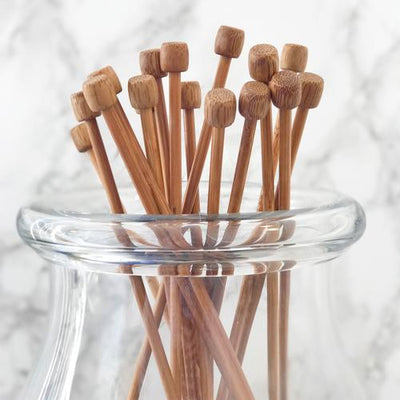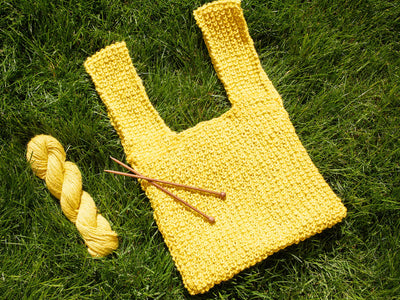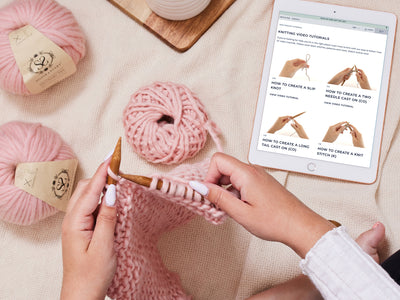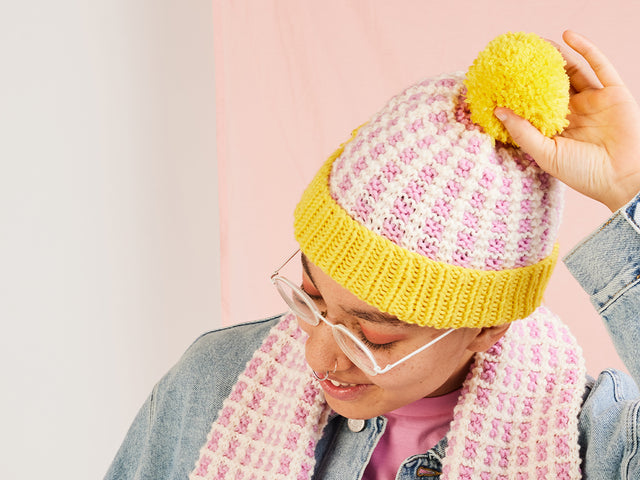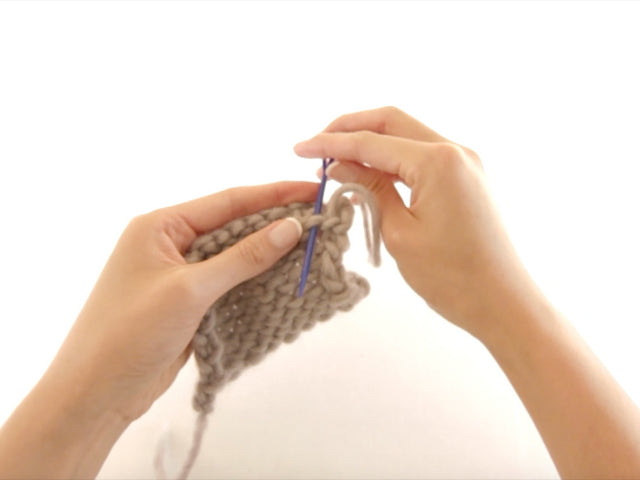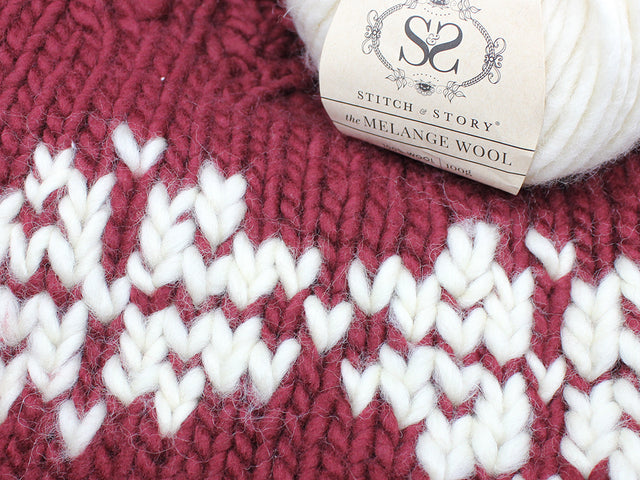
Own your knitting! Top tips for beginners
1 min read time
Hi Knitters,
Are you owning your knitting or is it owning you? Hopelessly tangled yarn, unravelling yarn ends, bumpy or loose tension, these could be just a few things that can make your knitting project not so fun! But don't worry - practise makes perfect and if you're a beginner knitter, here's some quick tips that I think every new knitter starting out should know - I sure wish someone had told me when I first started!
Tip 1 - Stop your yarn ball from tangling easily by using the tail-end found inside the ball not the outside!
When starting a new ball, simply stick your fingers right inside the ball, dig around, and pull out the first clump of yarn - you'll find the tail end is tucked inside! Use this to start knitting and you'll never have a rolling ball ever again! It stays put and as your knitting grows, the ball will get smaller and look deflated! Total genius. :)
Tip 2 - Are your tail ends coming undone even when you've sewn them in?
Try felting the tip of the tail or use your fingers to break up the strand after sewing. This will 'stick' better to the knitting and stop them from unravelling. After a little bit of wear your tail ends will become part and parcel of your finished item, no chance of them slipping loose!
Tip 3 - Get a stitch counter!
Keep forgetting which row you're on? Or perhaps you're putting your knitting down and after a while, pick it up only to forget where you stopped last?
You can get these nifty row counters from any haberdashery counter. Every time you finish one row, change the number on the counter as you go along. If you're tech savvy, there are also a few stitch counter apps for your smart phone, or even the old fashion way of tally charts will help. Either way, you'll never forget where you last stopped!
Tip 4 - Always block your knitting.
This is to ensure your knitting is the correct measurement and also ensures you smooth out any lumps or bumps in your knitting. To 'block' simply means using a damp handkerchief or sheet of fabric and placing it over your knitted work and using a hot iron to press lightly on the work to relax the wool fibres.





